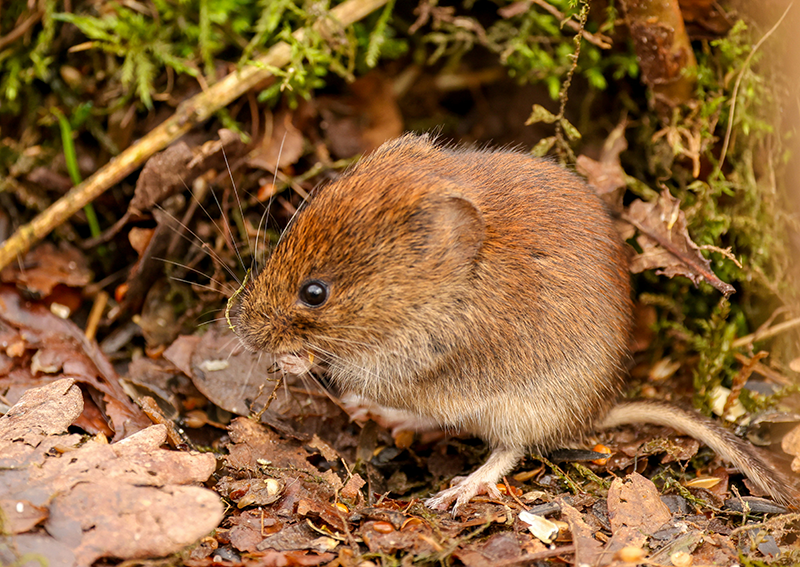Vole Pest Control Demystified: A Complete Review of Invasion Discovery and Efficient Therapy Approaches
As homeowner and yard lovers, the invasion of voles can be a consistent concern that calls for a systematic method for effective monitoring. By comprehending the behavioral patterns of these elusive rats, one can get useful insights right into their routines and preferences. From subtle indications of problem to the application of targeted control steps, navigating the realm of vole insect control requires a mix of knowledge and strategic action. In this thorough summary, we will certainly explore the subtleties of vole invasion detection and explore the realm of efficient treatment methods that can protect your areas from these below ground problems.
Comprehending Vole Habits Patterns
Recognizing the intricate habits patterns of voles is essential for efficiently applying pest control steps in agricultural and domestic settings. Voles, small rodents that look like mice however with stouter bodies, are notorious for their quick recreation prices and starved hungers for plant life. By diving into their behavior patterns, insect control professionals can acquire useful understandings into vole preferences, habits, and vulnerabilities.
Voles are primarily herbivores, eating a vast array of plants, bulbs, roots, and origins. They are likewise respected tunnelers, producing fancy underground burrow systems for nesting and foraging. By understanding these behaviors, parasite control specialists can purposefully put traps and lure stations along vole paths and entry points, raising the probability of successful removal.
Moreover, knowledge of vole behavior patterns can aid in establishing preventive procedures to discourage future infestations. By dealing with factors that bring in voles, such as dense plant life cover and quickly accessible food sources, homeowner can make their facilities less welcoming to these destructive pests - vole control. To conclude, a detailed understanding of vole habits is paramount in designing sustainable and efficient pest control techniques
Identifying Indicators of Vole Invasion
Efficient vole insect control starts with promptly identifying the telltale indications of vole problem on properties. One of one of the most usual indicators of vole presence is the presence of surface paths. These paths are slim pathways through yard or greenery that voles produce as they take a trip in between their burrows and food sources. Additionally, vole droppings are an additional clear sign of invasion. Vole droppings are little, round pellets that are frequently located along their paths or near their burrows.
Along with paths and droppings, munch marks on tree bark and plant life are additionally signs of vole activity. Voles have a routine of gnawing on the bases of trees and hedges, which can trigger damage and potentially kill the plants. In addition, the visibility of burrow openings in the ground suggests an active vole population. Vole burrow entryways are usually little and discovered in grassy or mulched locations.
Being attentive for these indications can help property proprietors discover vole infestations early and take proper bug control steps to avoid more damages.
Executing Targeted Control Procedures
What certain techniques can be used to successfully execute targeted control actions for vole bug management on residential properties? Executing targeted control measures for vole bug management needs a multi-faceted strategy that combines both avoidance and removal approaches. One of the crucial techniques is habitat adjustment, which entails removing vole-friendly settings such as tall lawn, weeds, and debris near structures. Installing obstacles like equipment cloth or gravel around yard beds and tree trunks can likewise help prevent voles.
Trapping is another efficient method for managing vole populaces. Live catches can be strategically placed along vole runways or tunnel entryways, baited with peanut butter or apple pieces. Once caught, voles must be humanely gotten rid of to a various area to stop reinfestation.
Rodenticides can be used as a last hotel for severe infestations, yet caution should be worked out to avoid damage to non-target animals. It is essential to follow all security guidelines and policies when making use of rodenticides for vole control.
Natural and Environmentally Friendly Solutions
The fostering of ecologically mindful practices can play a pivotal duty in taking care of vole populaces without causing harm to the ecosystem. Eco-friendly and all-natural solutions use a sustainable approach to vole parasite control, minimizing using hazardous chemicals and advertising biodiversity in the influenced locations.
One effective all-natural method is making use of killer urine or killer decoys. Predators like owls, snakes, and foxes are the vole's natural adversaries. By tactically positioning predator urine or decoys around the ravaged areas, voles might be discouraged from settling in those places.
In addition, planting vole-resistant greenery can aid in reducing vole damages. Plants such as daffodils, crown imperials, and Siberian squill are known to be uninviting to voles and can act as all-natural repellents.
Moreover, producing physical obstacles like wire mesh or gravel around at risk plants can avoid voles from accessing them. These obstacles can aid vole pest control safeguard yards and landscapes without posturing any risk to the setting or other non-target types. By integrating these environment-friendly and all-natural remedies, vole invasions can be handled properly while keeping ecological balance.
Long-Term Prevention Methods
To sustainably address vole infestations over time, implementing aggressive actions is critical for lasting avoidance techniques. By reducing thick vegetation, compost, and mess around buildings, you can make your home less enticing to voles.
Routine monitoring of vole activity is necessary for early discovery of any type of indications of infestation. Establishing vole traps can help in regulating their population before it ends up being a full-on invasion. It is likewise important to secure off any type of entry indicate frameworks or buildings to avoid voles from getting accessibility.

Conclusion
Finally, recognizing vole behavior patterns, determining indicators of invasion, carrying out targeted control measures, using environment-friendly and all-natural treatments, and applying long-term prevention methods are crucial steps in successfully handling vole problems. By being aggressive and taking the necessary steps to attend to vole problems without delay, individuals can successfully protect against and regulate vole problems in their residential properties.
